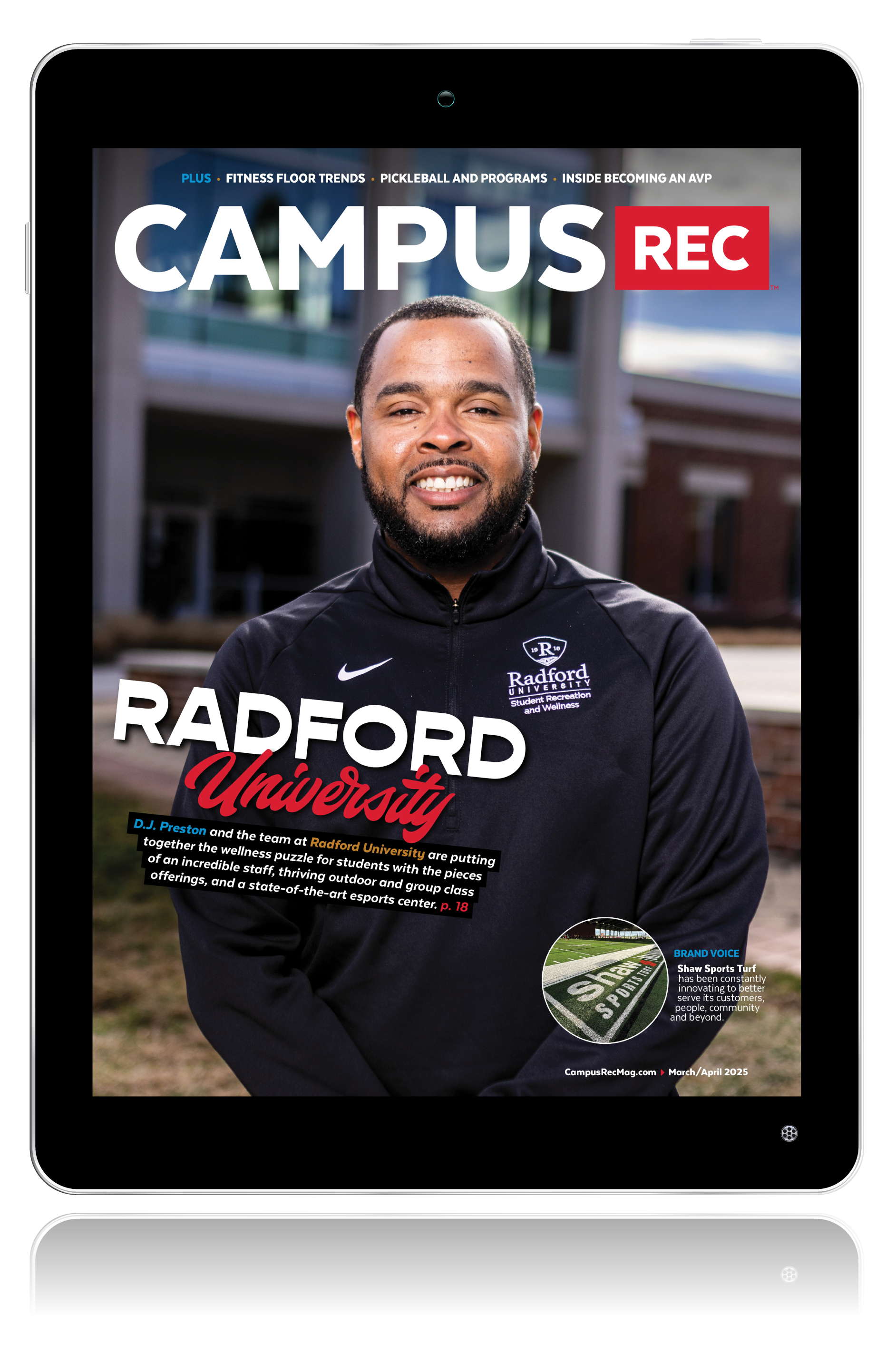“Once we put in artificial turf, our participation pretty much doubled, and at the same time our injuries — knee injuries, ankle injuries and other things that could possibly be attributed to a playing surface — stayed the same,” said Gary Cahen, the associate director for programs at the University of Central Florida (UCF). “So we had more people playing and the same amount of people reporting injuries to our athletic training staff.”
UCF Campus Recreation originally made the switch to artificial turf fields in 2006. They began by installing three fields, and later added three more in 2009. “There is no substitute for well-maintained grass,” explained Cahen. “But we are in Florida and as the university grew, we really couldn’t maintain our grass. It had potholes, it was very sandy and students wanted a higher-quality surface.”
According to Cahen, this past year, the three fields that were installed in 2006 reached the end of their lifespan and were in need of an upgrade. When deciding what turf company to work with, UCF had five different companies compete in a bid process. They contracted with Sports Turf One, a construction management firm, to complete the project, and Astroturf installed the turf. As Cahen explained, Sports Turf One built the foundation, and Astroturf put down the carpet.
“Since we had 10 years of already having this product and maintaining it, we really knew what to look for and what we liked,” added Cahen. “Our students were used to a certain surface, so we really couldn’t get something too different. Especially since we have two sets of three fields. If Monday your game is on one set of fields and then on Wednesday your game was on the other fields that are a completely different type of feel, our students probably would not be very happy with that.”
At Clemson University, they were building brand-new turf fields instead of replacing existing ones. They took a more innovative approach. The new intramural and club sport fields are part of a new recreation site, and this was the first project for the complex. Clemson also held an extensive research and bid process, in the end settling on Shaw Sports Turf.
In addition to the new turf field, they added HydroChill, which is a patented polymer that adheres to the infill and causes evaporative cooling. “It was a post-construction application,” said David Frock, the executive director of campus recreation at Clemson. “Being here in the south it gets pretty hot, and a couple other schools in the area had applied it. You apply it and then activate it with water, so with ours it is the sprinkler system and it reduced the temperature of the overall field by 40 to 50 degrees for about a three-day period, which is really important here because of how hot it is.”
If you are undergoing a similar project, Frock suggested consulting with others. “The biggest thing is to rely on people who have done it recently — get some advice,” he said. “Seek out people who have that installation and find out what worked for them, what didn’t, what were the challenges, and if they would do anything differently.”
Cahen also recommended keeping your mission top of mind. What are you trying to accomplish? “Understand the application of what your fields are going to be used for on the front end,” said Cahen. “There is a lot of planning that goes into what permanent lines to put down, what type of drainage you need and, depending on your climate, what type of rubber you need. Really trying to visit and talk with people who have had the same turf in a campus recreation application for a long time — that is something I would recommend.”












